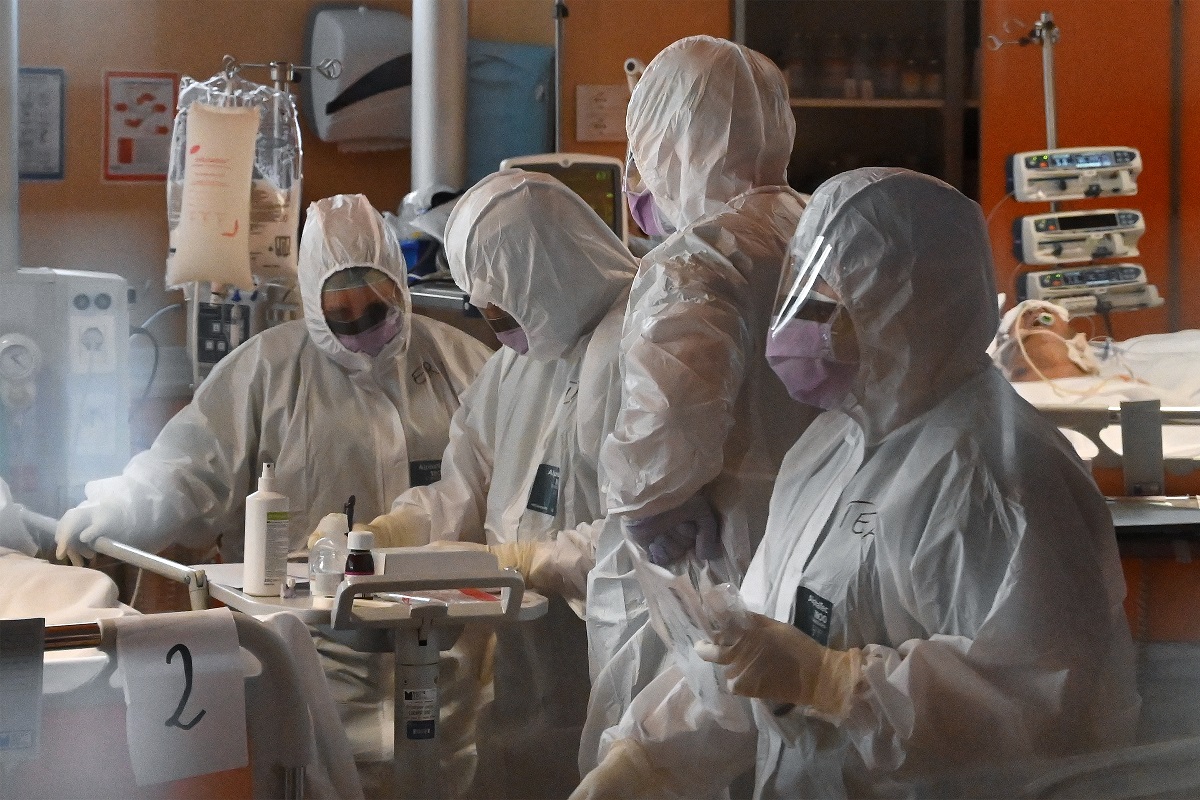Still unexplained
The hunt for the origins of Covid-19 has for the past four years been a tangled web of politics, power struggles, and international finger-pointing.
In Coronavirus cases airborne transmission are possible in specific circumstances, in which procedures or support treatments that generate aerosols are performed, such as intubation within a patient’s windpipe, disconnecting a patient from a ventilator, and cardiopulmonary resuscitation (CPR).

The WHO continues to recommend droplet and contact precautions for those people caring for COVID-19 patients, based on the current evidence. The WHO continues to recommend droplet and contact precautions for those people caring for COVID-19 patients, based on the current evidence. When performing medical operations that produce aerosols, it's recommended that people take measures to prevent possible transmission by air, it added. (Photo by Alberto PIZZOLI / AFP)
The novel Coronavirus which has taken the whole world in its grip, is primarily transmitted through “respiratory droplets and close contacts” and does not seem to stay long in the air, said the World Health Organisation (WHO) in a recent publication.
Respiratory infections can be transmitted through droplets of different sizes, according to the WHO.
Social distancing is recommended because droplet transmission occurs when you have close contact (within one metre) with a person who has respiratory symptoms such as coughing or sneezing, which may spread these potentially infectious droplets, typically 5-10 microns in size, to your body.
Advertisement
Touching surfaces or objects in the immediate environment around the infected person can lead to transmission, state-run China Daily quoted the WHO publication as saying.
Airborne transmission is different from droplet transmission, as it refers to the presence of microbes within droplet nuclei, which are generally considered to be the smaller particles of less than 5 microns in diameter, and which can remain in the air for long periods of time and be transmitted to others over distances greater than one metre, it said.
In Coronavirus cases airborne transmission are possible in specific circumstances, in which procedures or support treatments that generate aerosols are performed, such as intubation within a patient’s windpipe, disconnecting a patient from a ventilator, and cardiopulmonary resuscitation (CPR).
According to the publication, no cases of transmission by air were reported in an analysis of 75,465 patients with the coronavirus in China.
The WHO continues to recommend droplet and contact precautions for those people caring for COVID-19 patients, based on the current evidence.
When performing medical operations that produce aerosols, it’s recommended that people take measures to prevent possible transmission by air, it added.
The Coronavirus pandemic has infected over one million people worldwide on Friday as the number rose to 1,016,128 and claimed 53,146 lives.
Advertisement